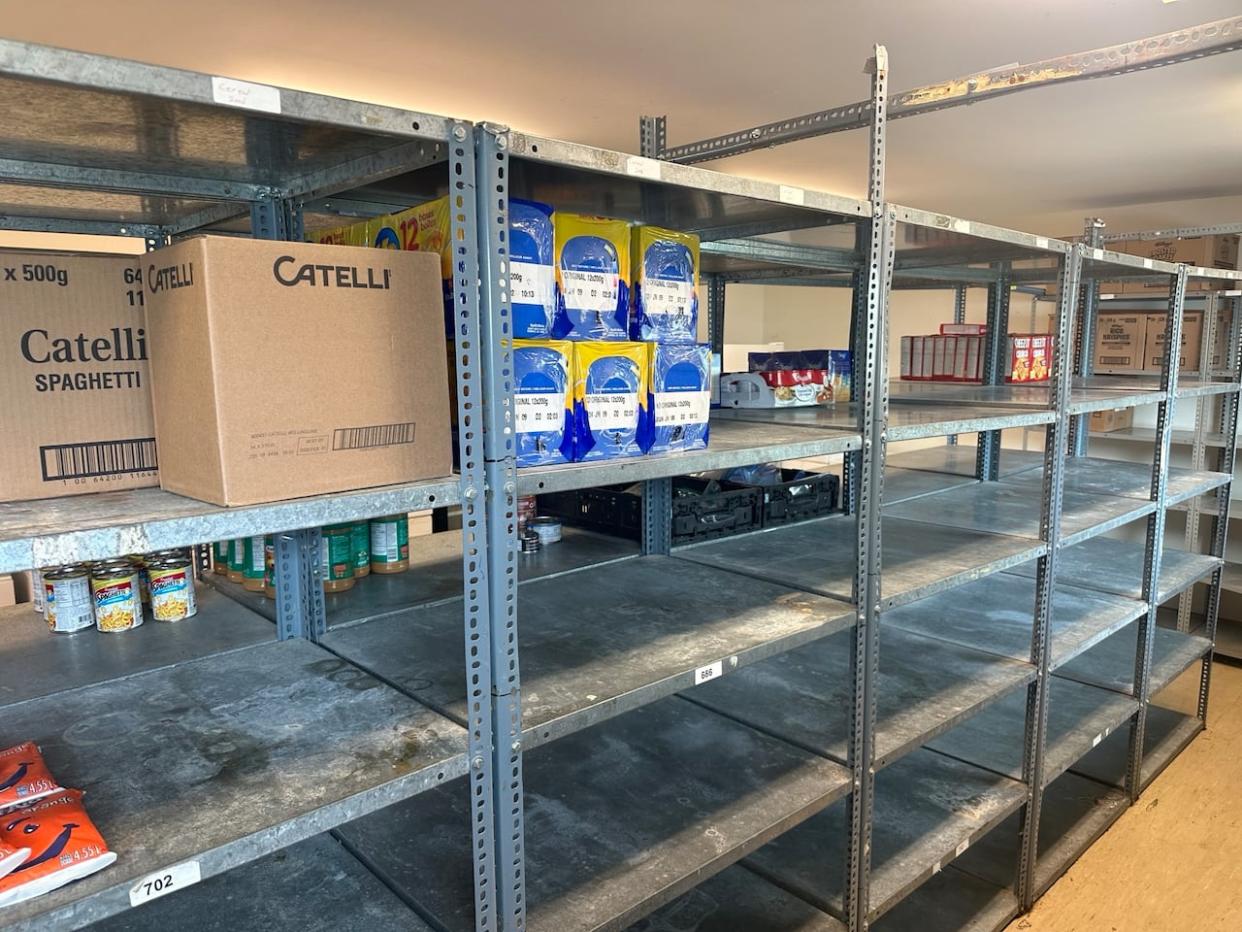Advocates call for action as N.L. leads country in severe food insecurity


Some of the shelves at the McSheffrey Resource Centre's food bank in St. John's. (Submitted by Alison Hollahan)
The CEO of Food First N.L. says Newfoundland and Labrador is leading the country in a statistic that no province wants.
"We are now the province in the country that has the highest rate of severe food insecurity. So 8.5 per cent, roughly, of people in this province are severely food insecure. That means they're going hungry," said Josh Smee.
Smee said there's been a sharp increase of severe food insecurity over the past year. At that end of the spectrum people are missing meals, reducing food intake and at the most extreme going a day or more without food.
Smee made the comments as part of a panel discussion on CBC Radio's The Signal where guests talked about the rates of rising poverty and food insecurity across the country. They also examined the functioning of emergency food systems with a look at rethinking how they function.
But an underlying point from guests was that there is not enough political attention and action for a solvable problem.
Empty Shelves
An indicator of where things are at locally can be found when looking at the shelves of the McSheffrey Resource Centre's food bank in St. John's.
"So our shelves are bare. It's not looking too good," said East End Food Banks Coalition coordinator Alison Hollahan.
WATCH | Adam Walsh leads a discussion on food insecurity rates and rethinking food charity:
She said the number of people coming through the doors has doubled since 2020.
"We have so many more people who are using the food bank that it's flying off the shelf so quickly. We just reach out, look for donations, you know," said Hollahan.
Hailey Pudan is a member of Food First N.L.'s Lived and Living Experience Advisory Group and has also witnessed the ramp up of demand.
"Watching everybody's hampers or monthly parcels get smaller because the demand, the need, is higher but what's coming in is barely scratching the surface of the food insecurity or affordability that people are facing," said Pudan.
Leading the country
According to the University of Toronto's household food insecurity research program PROOF, which uses Statistics Canada data, 22.9 per cent of people in all ten provinces lived in a food-insecure household in 2023.
"That amounts to 8.7 million people, including 2.1 million children, living in households that struggled to afford the food they need," said the April 26 blog post.
It said for Newfoundland and Labrador, 26 per cent of people lived in food-insecure households – which translates to 134,000 people.

Josh Smee, executive director of Food First N.L., says overhauling the province's income policies can eliminate hunger. (Malone Mullin/CBC)
And while the province has the highest rate of people living in severely food insecure households, the post said "Quebec continues to stand out as having the lowest percentage of people living in food-insecure households and severely food-insecure households."
Quebec's percentage of people living in severely food-insecure households is 2.8 percent.
Food Banks Canada's CEO Kirstin Beardsley calls the national situation heartbreaking but not surprising given the number of people at the doors of food banks across the country.
"It can't be the country we want. Any of us. This is seniors going hungry. This is kids going to school hungry," she said.
"What's the future going to look like when we are not making sure the kids of today have the nutrition they need to go to school and learn and thrive? What kind of future are we costing ourselves if we can't get this right now?"
Rethinking food charity
Smee said the country is in a profound structural crisis and within it it's important to look at and rethink how emergency food supports function for people.
Food First N.L. has spent a lot of time on the issue, including releasing a report last year called Rethinking Food Charity in Newfoundland and Labrador.
The report put forward recommendations for the food charity sector, government and system-level organizations.
On top of reminding people of the importance to give to food banks, Smee is also asking for one extra step.
"I would only add every time you do that call or email your MHA and ask them why you just had to do that. It's not clear to me why it should be this way," he said.
He said it's very much within the power of existing systems to fix things.
"It's really simple. It just means getting more money to the folks who don't have enough. This is not rocket science."
Download our free CBC News app to sign up for push alerts for CBC Newfoundland and Labrador. Click here to visit our landing page.


